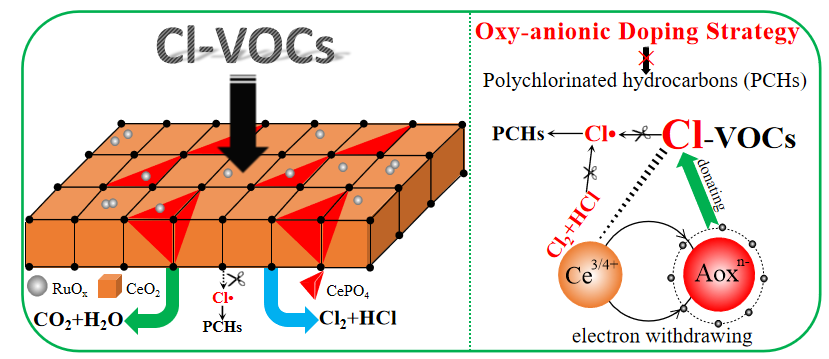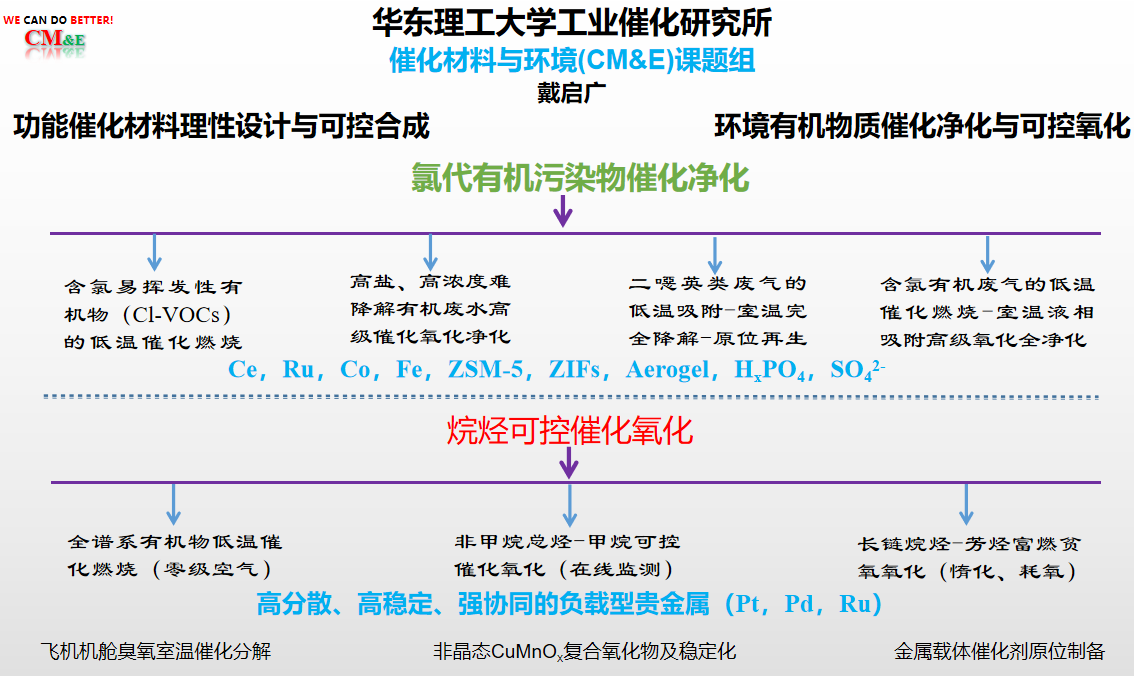博文
含氧阴离子掺杂:抑制Cl-VOCs催化燃烧中多氯副产物的新认识
||
https://pubs.acs.org/doi/pdf/10.1021/acs.est.2c00942

Understanding the formation and inhibition of more toxic polychlorinated byproducts from the catalytic oxidation elimination of chlorinated volatile organic compounds (Cl-VOCs) and unveiling efficient strategies have been essential and challenging. Here, RuOx supported on CePO4-doped CeO2 nanosheets (Ru/Pi-CeO2) is designed for boosting catalytic oxidation for the removal of dichloromethane (DCM) as a representative Cl-VOC. The promoted acid strength/number and sintering resistance due to the doping of electron-rich and thermally stable CePO4 are observed along with the undescended redox ability and the exposed multi-active sites, which demonstrates a high activity and durability of DCM oxidation (4000 mg/m3 and 15,000 mL/g·h, stable complete-oxidation at 300 °C), exceptional versatility for different Cl-VOCs, alkanes, aromatics, N-containing VOCs, CO and their multicomponent VOCs, and enhanced thermal stability. The suppression of polychlorinated byproducts is determined over Ru/Pi-CeO2 and oxy-anionic S, V, Mo, Nb, or W doping CeO2, thus the oxy-anionic doping strategy is proposed based on the quenching of the electron-rich oxy-anions on chlorine radicals. Moreover, the simple mechanical mixing with these oxy-anionic salts is also workable even for other catalysts such as Co, Sn, Mn, and noble metal-based catalysts. This work offers further insights into the inhibition of polychlorinated byproducts and contributes to the convenient manufacture of monolithic catalysts with superior chlorine-poisoning resistance for the catalytic oxidation of Cl-VOCs.





https://wap.sciencenet.cn/blog-3913-1337982.html
上一篇:日本载人航天系统公司(JAMSS)的光催化剂空气净化装置
下一篇:[转载]你的纳米酶催化概念用错没有?